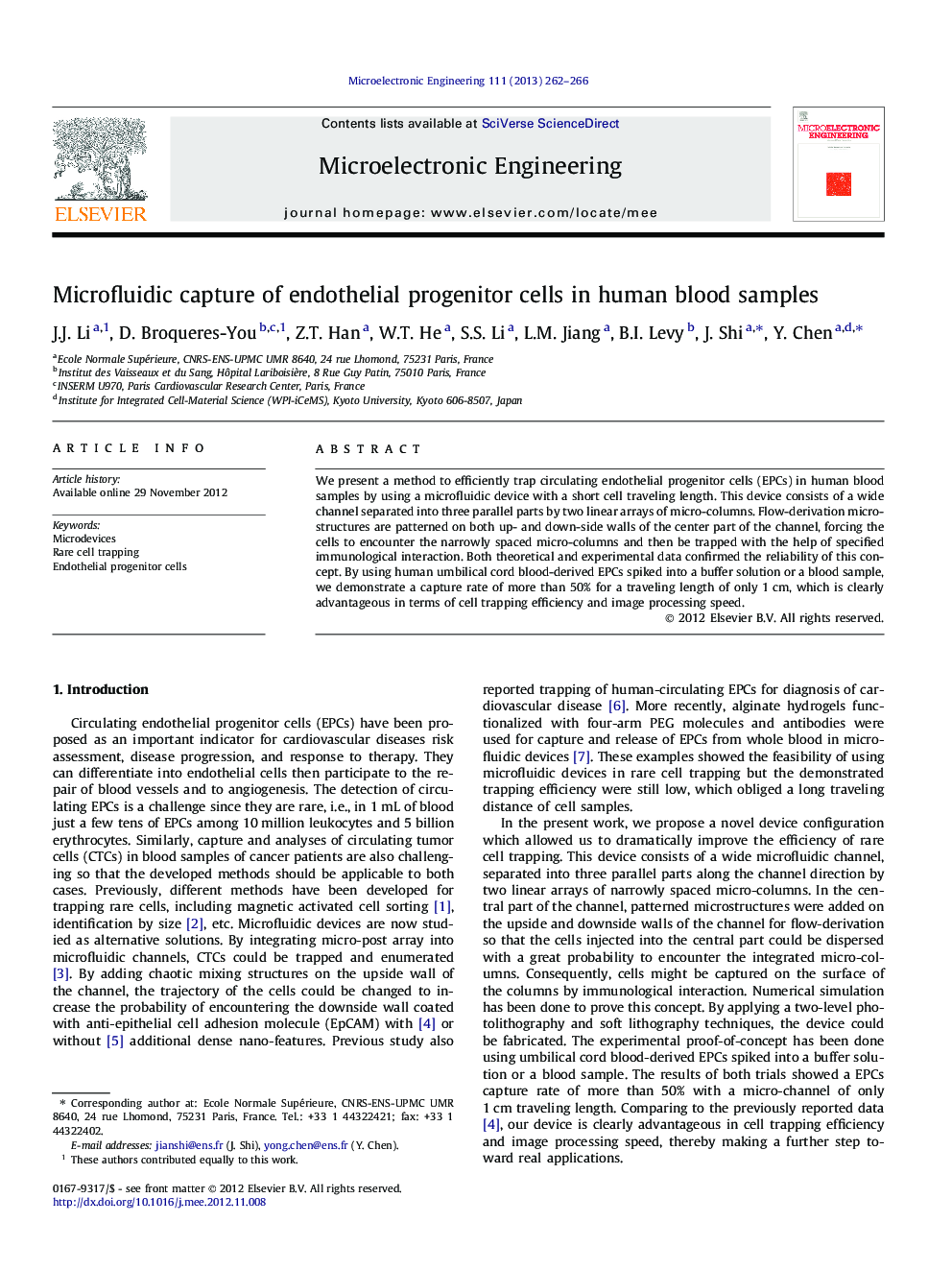| Article ID | Journal | Published Year | Pages | File Type |
|---|---|---|---|---|
| 539995 | Microelectronic Engineering | 2013 | 5 Pages |
We present a method to efficiently trap circulating endothelial progenitor cells (EPCs) in human blood samples by using a microfluidic device with a short cell traveling length. This device consists of a wide channel separated into three parallel parts by two linear arrays of micro-columns. Flow-derivation microstructures are patterned on both up- and down-side walls of the center part of the channel, forcing the cells to encounter the narrowly spaced micro-columns and then be trapped with the help of specified immunological interaction. Both theoretical and experimental data confirmed the reliability of this concept. By using human umbilical cord blood-derived EPCs spiked into a buffer solution or a blood sample, we demonstrate a capture rate of more than 50% for a traveling length of only 1 cm, which is clearly advantageous in terms of cell trapping efficiency and image processing speed.
Graphical abstractSchematic of a microfluidic device for high efficient rare cell trapping.Figure optionsDownload full-size imageDownload as PowerPoint slideHighlights► A microfluidic device was designed for high efficiency capture of endothelial progenitor cells. ► The device was fabricated by conventional photolithography and soft lithography techniques. ► The concept was proved both numerically and experimentally using EPCs spiked in solution or blood. ► The capture rate of EPCs could be more than 50% for a cell traveling length of only 1 cm.
